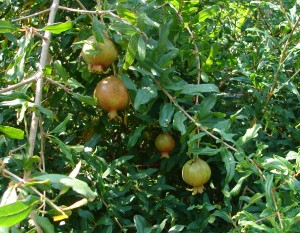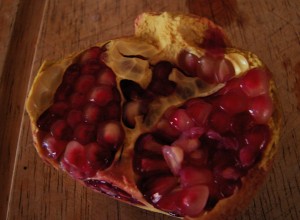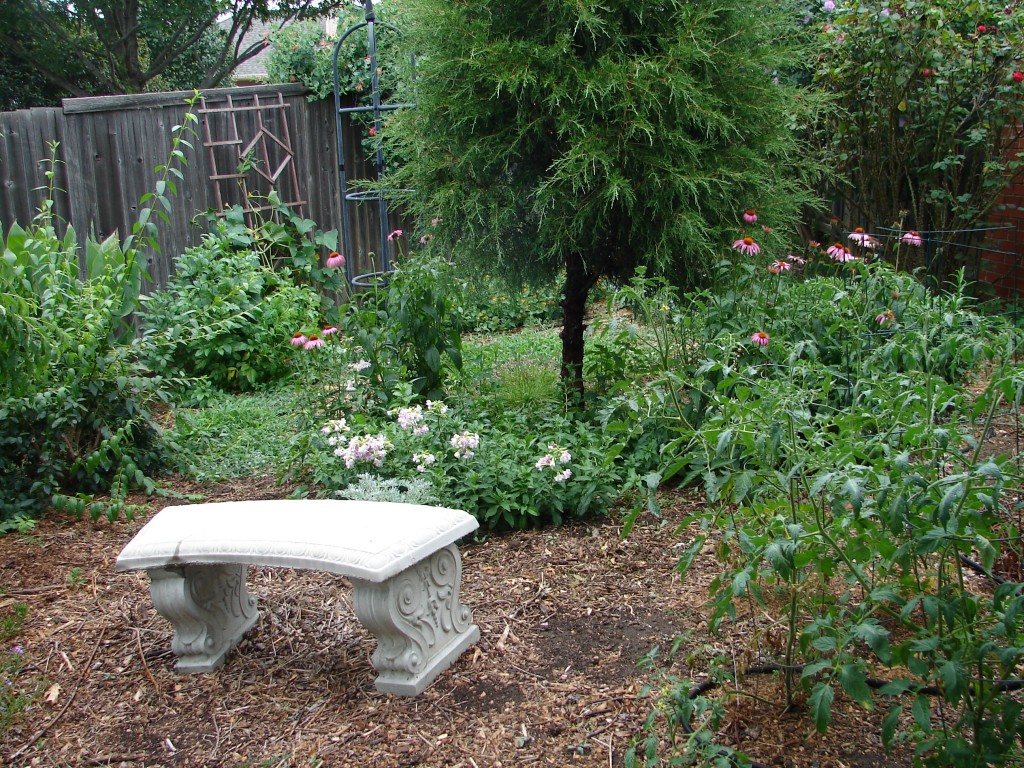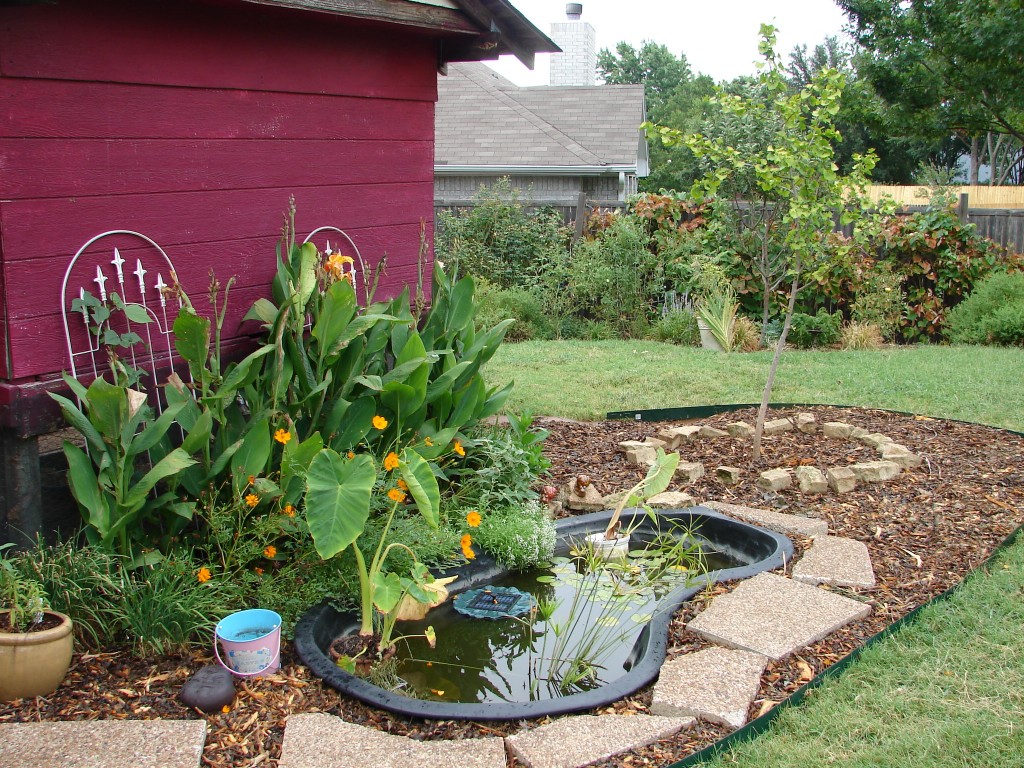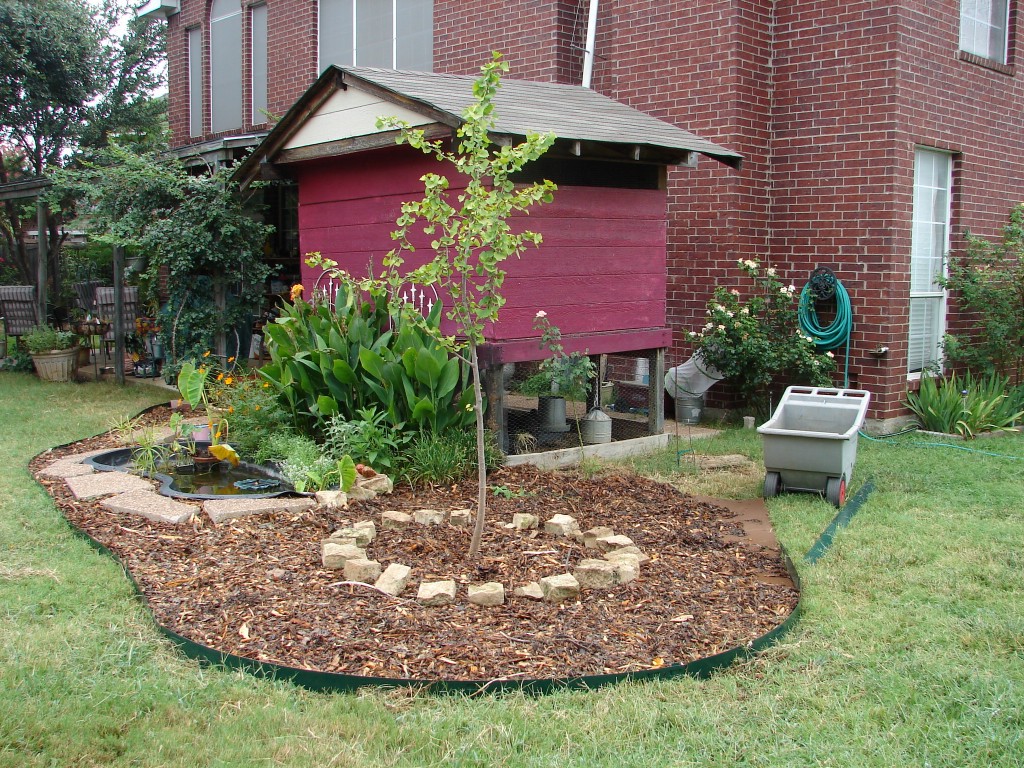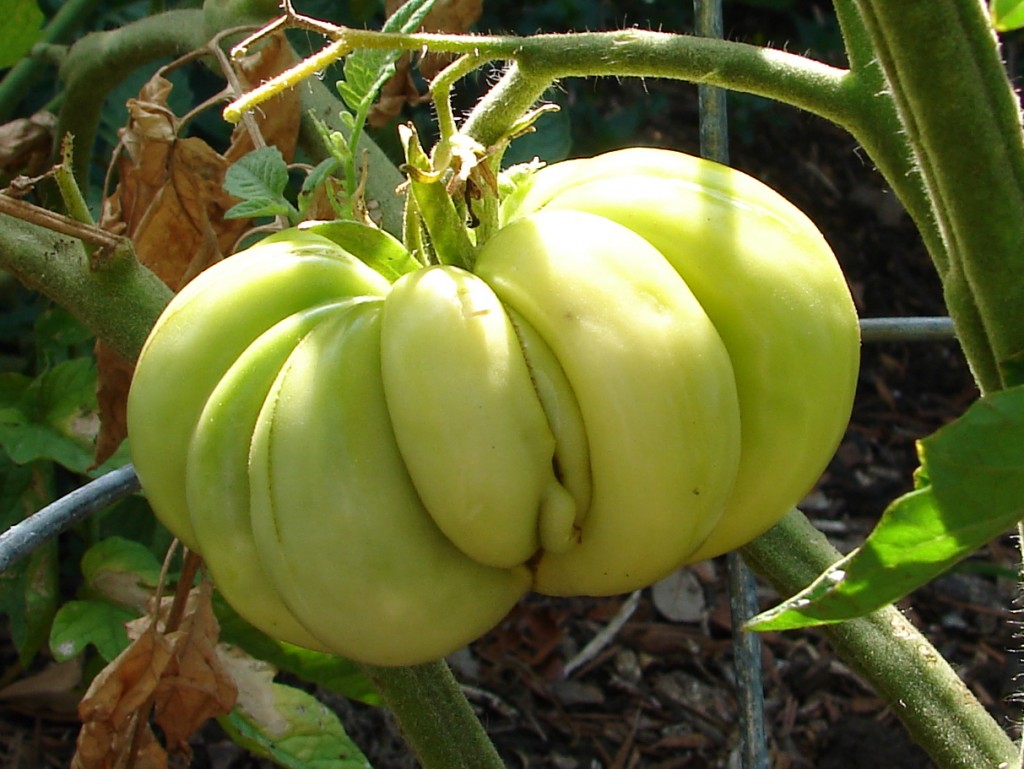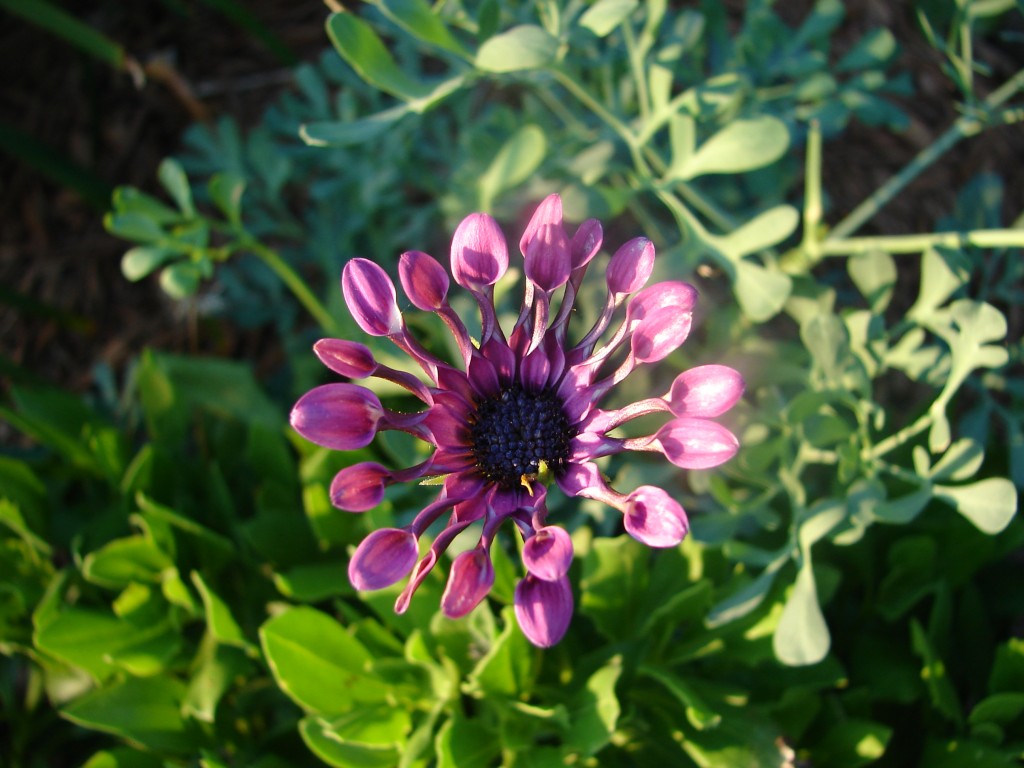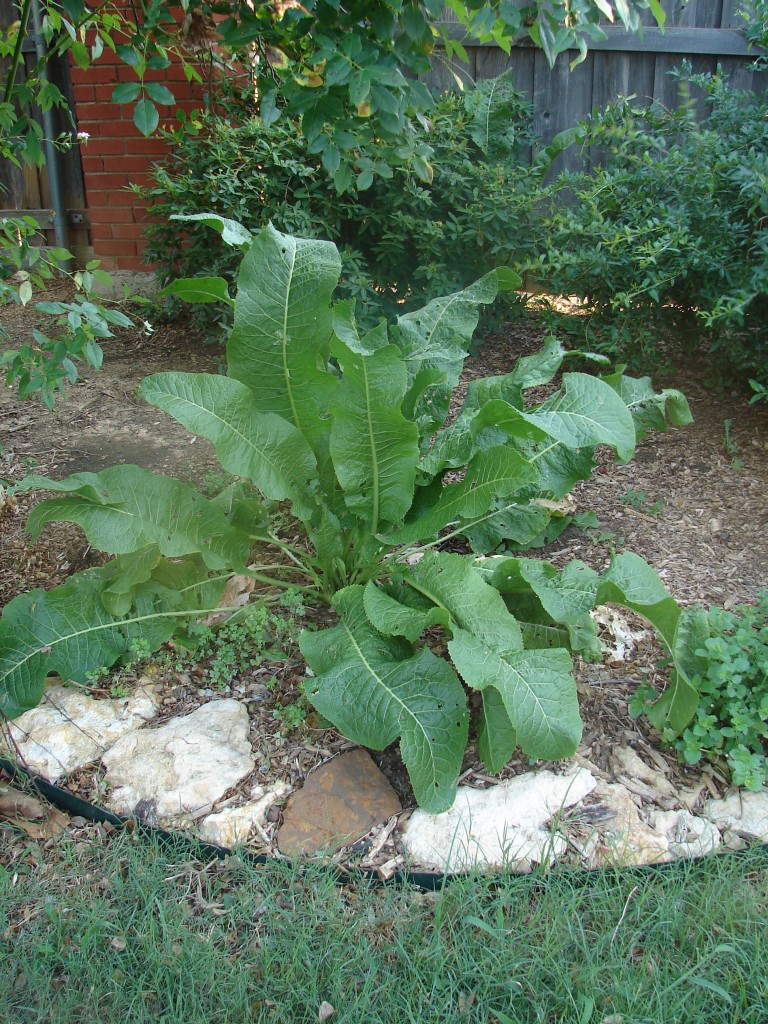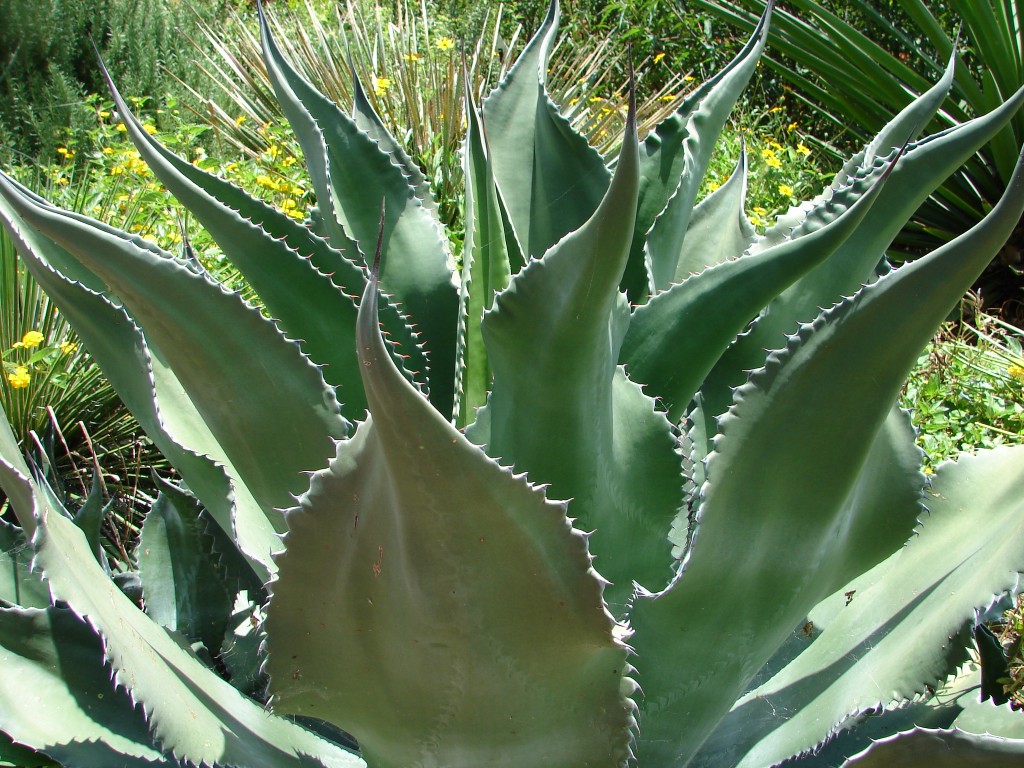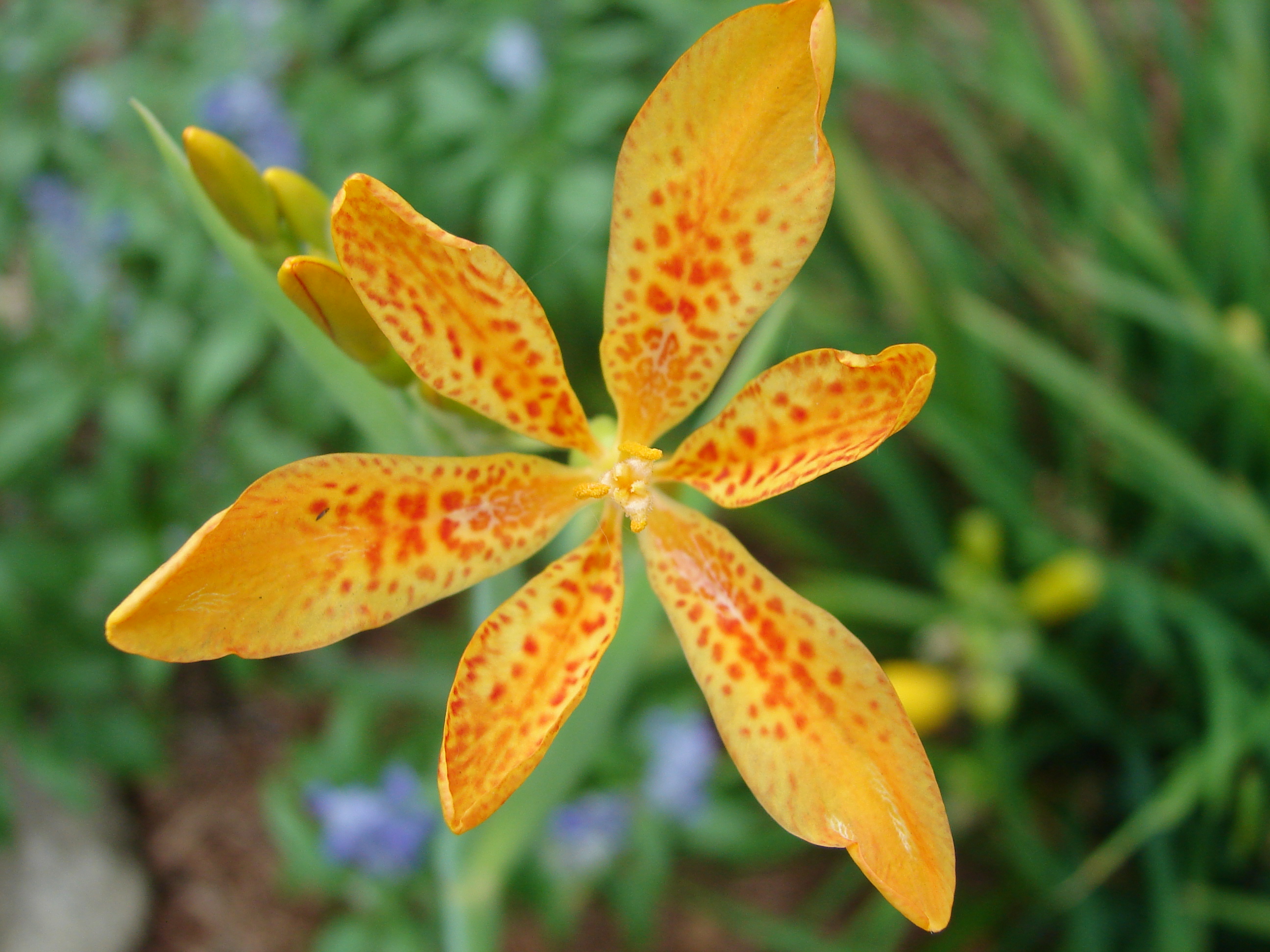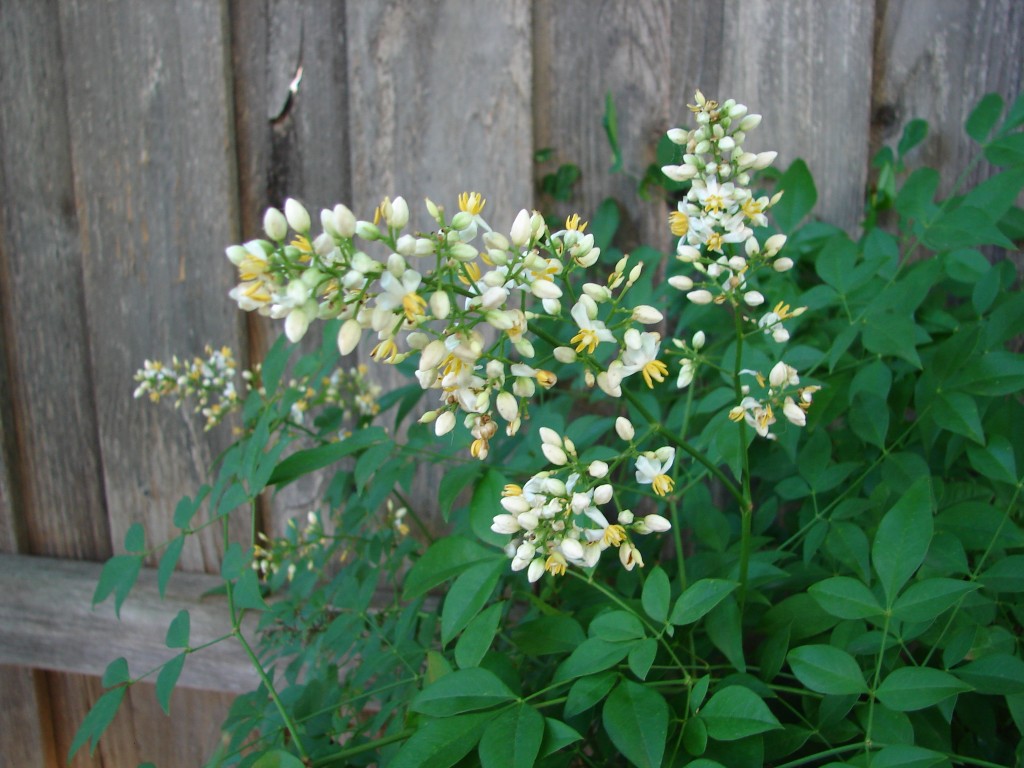Walking through my garden this morning… there is such a lot of work to be done! It has been nearly a month since I have spent any real time there. Life just gets in the way sometimes, but it seems to hit full on in August just when things really need to get done for a fall garden.
As frustrating as that is, it is also great to walk through the garden and see what all is still flourishing in spite of the neglect. There are butterflies and bees every where.
We had our first pomegranate of the season! I absolutely LOVE pomegranates. I remember as a kid eating them at my great aunts house in Commerce, TX. She had three trees that grew beside her driveway (the old fashioned kind of driveway that was just two strips of cement with grass in the middle.) In the recent past, it would break my heart to go through the grocery store to see the pomegranates only occasionally sold as expensive “exotics” when I knew very well that they are perfectly happy to grow here. Our pomegranate tree is just now mature enough to produce anything of consequence. And it was wonderful! The tree (turned bush-like by this spring’s tornado) looks like it is loaded, too. We will have to prune it back heavily this spring so that it doesn’t completely kill out Great, Great Mamo Goode’s daylilies that originally lived just in front of it..
The apple tree is still maturing too. It had five apples on it earlier in the season and we are now down to just one. Hopefully it will make it all the way to harvest time.
The banana tree had gone from being just a mound on the ground (it dies back to the ground every year)
to being over 20 feet tall! And, boy does it look luscious! Maybe someday it will even produce a banana? I know… wishful thinking.
The rest of the garden… like I said, there is a lot to be done… mostly in the form of pulling out dead plants. Poor things. It’s hard to go for a full month with barely a drink of water.
As for getting things planted, let’s see. I have truly missed the boat on getting any melons planted. Luckily, I have some musk melons that decided not to wait on me and planted themselves. We haven’t eaten any yet, but hopefully they will be good. the tomatoes may be complete goners. We will have to see if any creative pruning will revive the old plants, but it is too late for new plants. That is truly a shame!
I have some pepper plants that actually look the best they have since I planted them this spring. Go figure.
I have let the okra go. I should be horsewhipped for that one. OKRA! Gone.
The green beans look like they are putting on a lot of new blooms. That is a good sign. But the fancy purple podded pole beans I ordered will have to wait until next year.
So, of all the fancy seeds that I ordered for the fall garden, what can I still get planted? On a wild hair, I ordered some green globe artichokes. Since I have absolutely no idea when is the best time to plant those in Texas, I will go ahead and put out a few just to see. The clover should have been put out much earlier, but since it was intended as a filler for the lawn, I will go ahead and put it out too. Oh, who am I kidding. Even though it’s late, I will go ahead and put out at least some of almost everything that should have been planted earlier: basil, cabbage, amaranth. I’m only about a week past the recommendation for winter squash and pumpkin. They HAVE to go in. I have seed for Golden Hubbard Squash, Burgess Buttercup, Turks Turban and Baby Boo pumpkins. Hopefully some of these varieties will be forgiving of my delay.
I’m still in range for the Thumbelina carrots, Brussels sprouts, cabbage, broccoli, and winter lettuce. I also still have several things that are waiting on September 15 (or later) to go in such as the sugar snap peas.
I may be able to squeak out a fall garden after all. As much as I love all my friends and family and the many activities that we get ourselves into, a good portion of this weekend will be devoted to the garden. You are welcome to come and join me if you like. Oh, and wish me luck!
-- Weather When Posted --
- Temperature: 90°F;
- Humidity: 42%;
- Heat Index: 91°F;
- Wind Chill: 90°F;
- Pressure: 29.98 in.;
